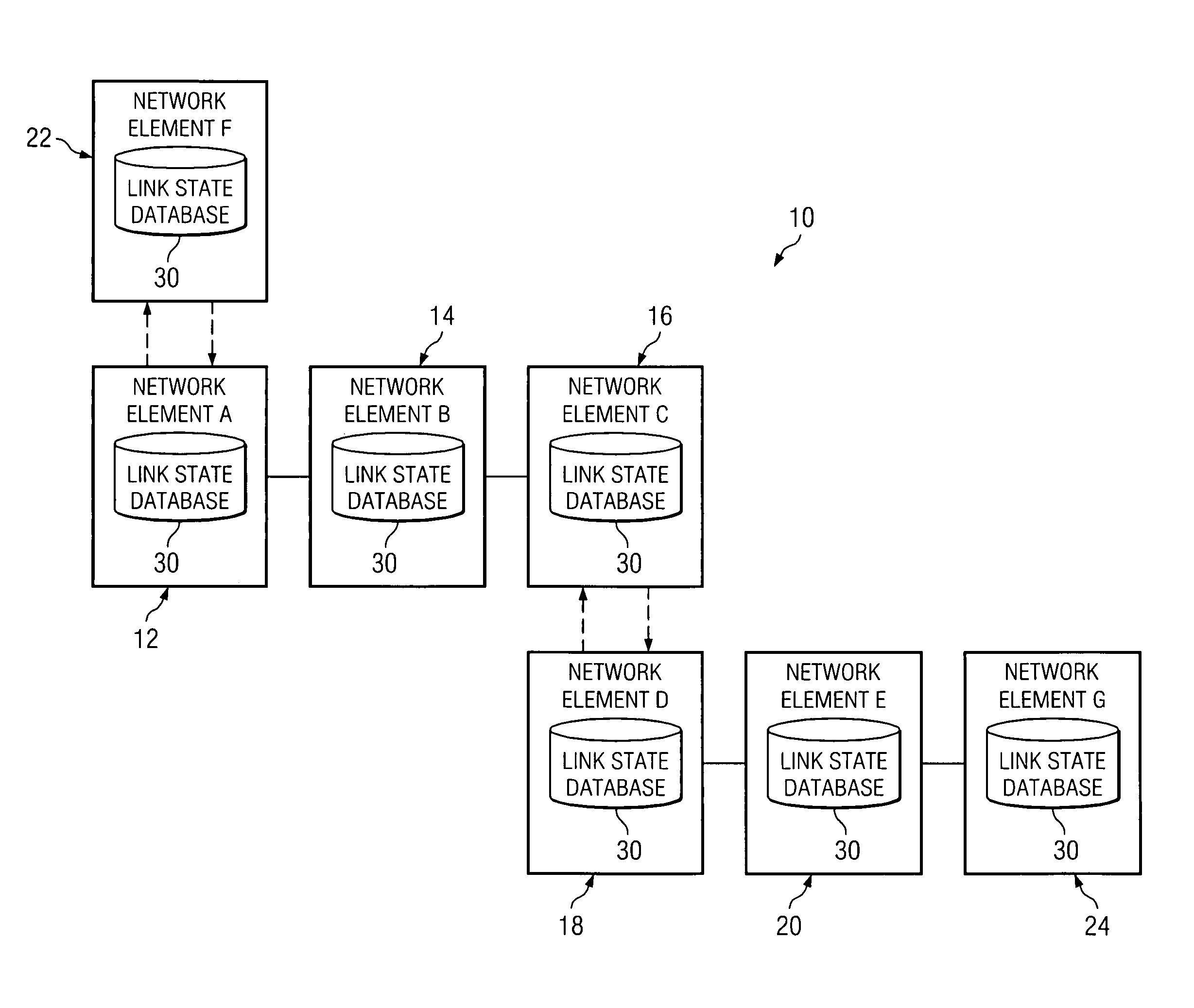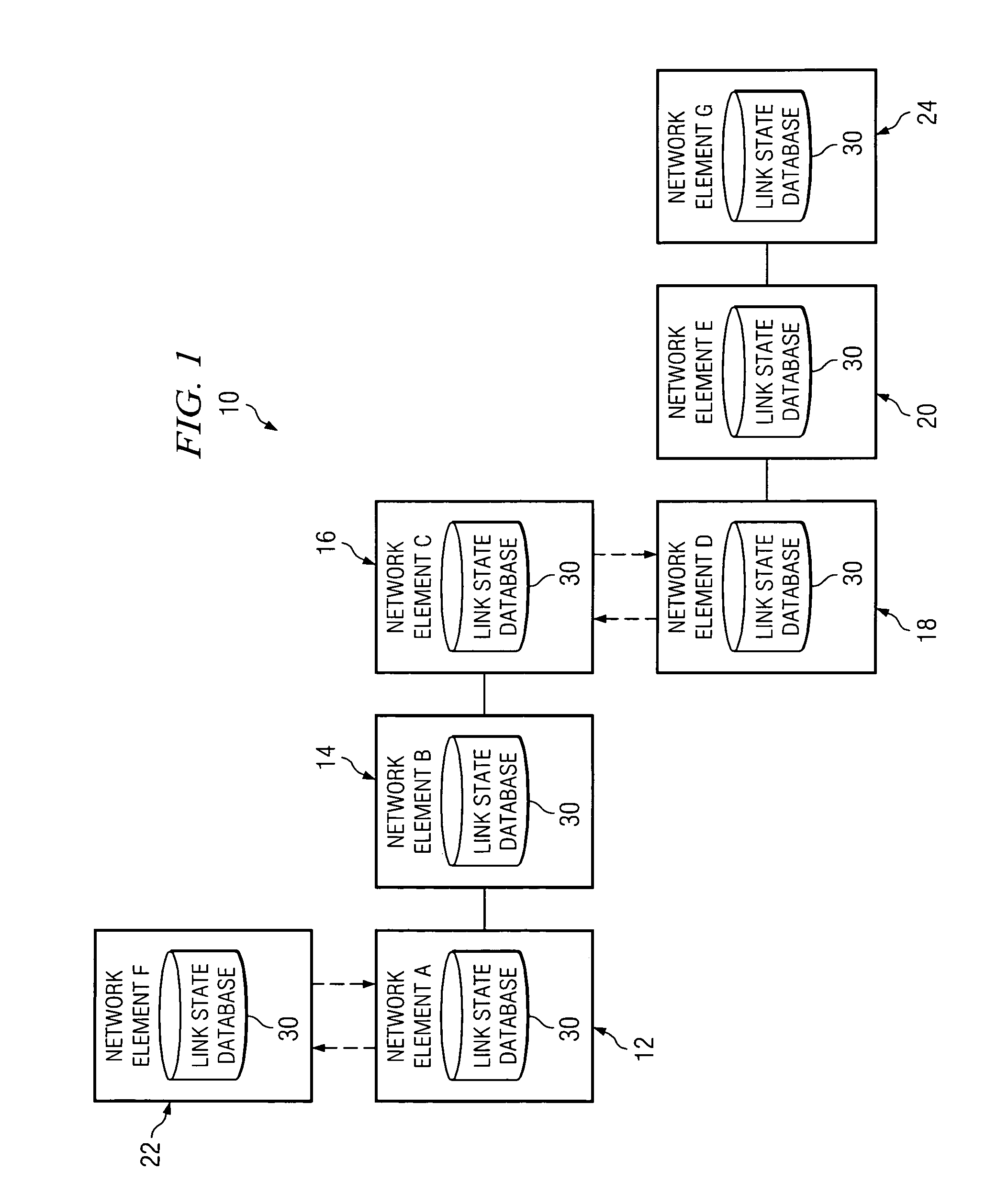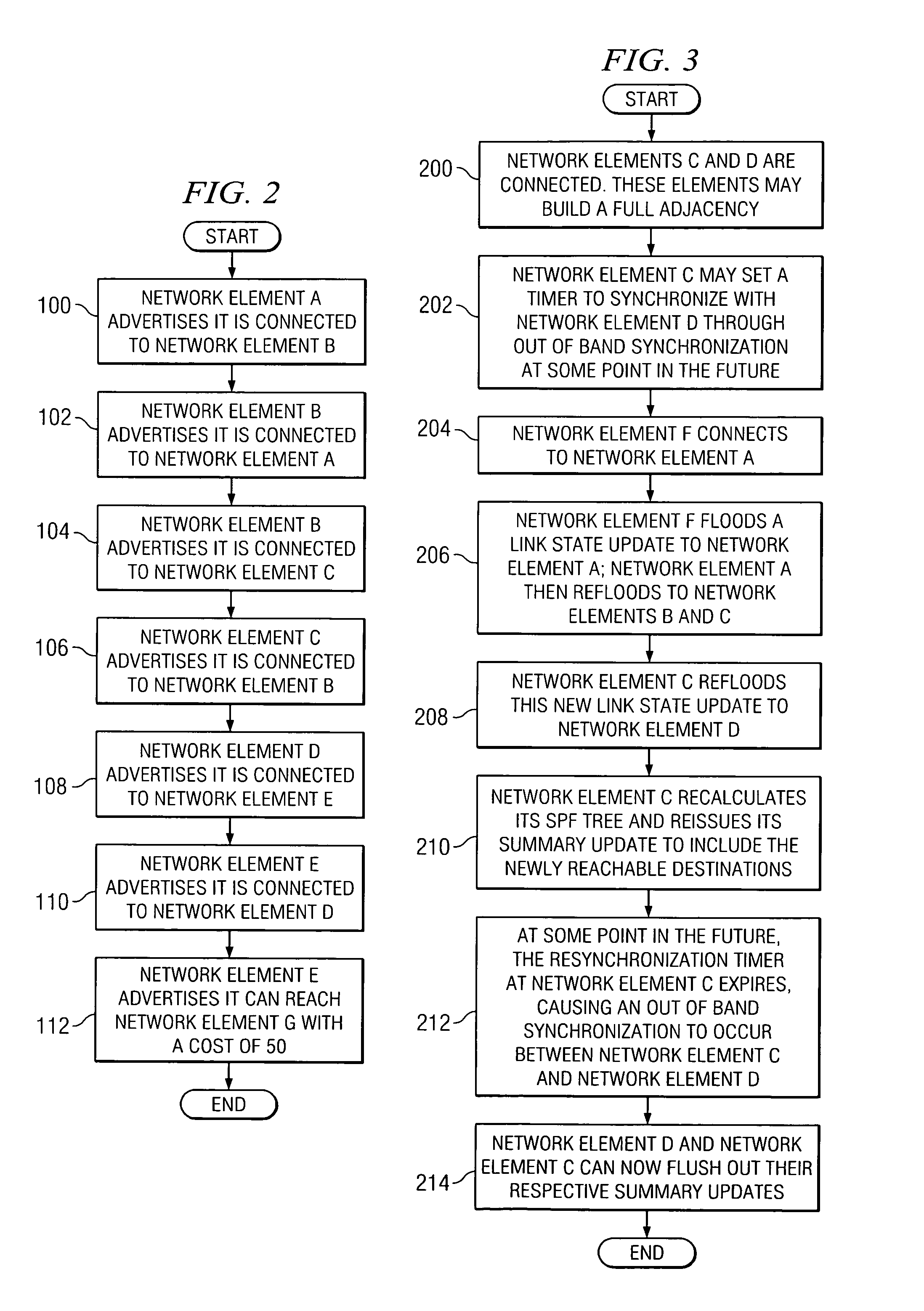System and method for synchronizing link state databases in a network environment
a network environment and database technology, applied in the field of communication, can solve the problems of cumbersome information exchange, arduous propagation and processing of such signaling data, and the network architecture has grown increasingly complex in the communication environment, so as to achieve the effect of minimal overhead, avoid modification of packet formats or route calculation mechanisms, and save resources
- Summary
- Abstract
- Description
- Claims
- Application Information
AI Technical Summary
Benefits of technology
Problems solved by technology
Method used
Image
Examples
Embodiment Construction
[0016]FIG. 1 is a simplified block diagram of a communication system 10 for synchronizing link state database information in a network environment. Communication system 10 may include multiple network elements 12, 14, 16, 18, 20, and 22. Network elements 12, 14, 16, 18, 20, and 22 may also be referred to herein as network elements A-F respectively. The letter designations assigned to network elements 12, 14, 16, 18, 20, and 22 do not connote any type of hierarchy; the designations are arbitrary and have been used for purposes of teaching only. These designations should not be construed in any way to limit their capabilities, functionalities, or applications in the potential environments that may benefit from the features of communication system 10. Each network element 12, 14, 16, 18, 20, and 22 may be equipped with a link state database 30 that includes information associated with surrounding network elements, as well as data to be used in routing packets in the context of network ...
PUM
 Login to View More
Login to View More Abstract
Description
Claims
Application Information
 Login to View More
Login to View More - R&D
- Intellectual Property
- Life Sciences
- Materials
- Tech Scout
- Unparalleled Data Quality
- Higher Quality Content
- 60% Fewer Hallucinations
Browse by: Latest US Patents, China's latest patents, Technical Efficacy Thesaurus, Application Domain, Technology Topic, Popular Technical Reports.
© 2025 PatSnap. All rights reserved.Legal|Privacy policy|Modern Slavery Act Transparency Statement|Sitemap|About US| Contact US: help@patsnap.com



